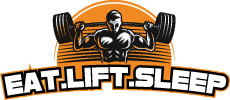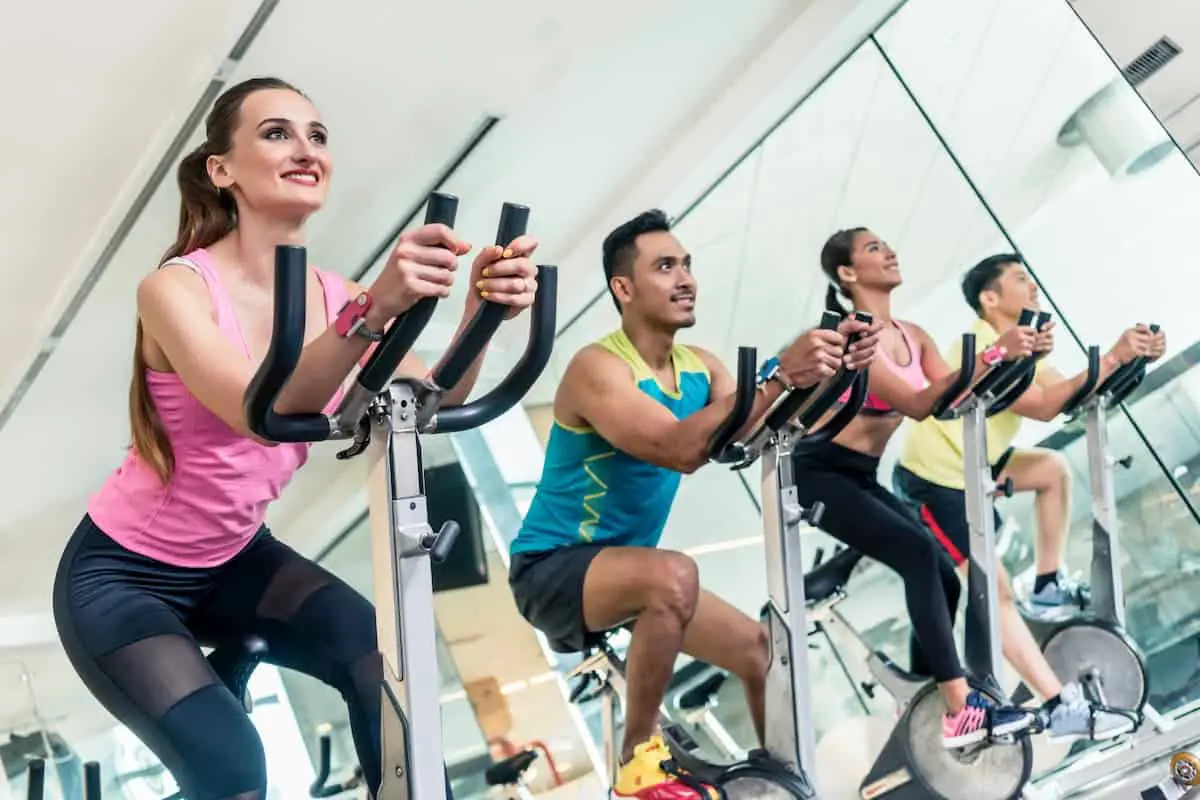A high vertical jump is revered in every sport. Be it a basketball slam-dunk, volleyball spike, soccer header, tennis jump serve, and whatnot, every jaw-dropping move is born out of a high vertical jump. If you are an aspiring athlete, tie your laces tight, as the vertical jump is an important skill for most sports.
Your vertical jump averages, says everything about your athletic performance. It is a ‘barometer’ of your speed, agility, quickness, and explosive power. Your success in athletic endeavors is closely dependent on finding an answer as to how to increase vertical jumping.
This post is your detailed guide on vertical jumps. You will find all your vertical leaps related answers here.
Vertical Jump
The vertical jump is your ability to defy gravity and soar high up in the air. This skill can make you a star in your sport. Vertical jumps are a mirror of how powerful you are. Measuring it will give you your speed-strength report.
Types of Vertical Jumps
Standing Vertical Jump
Standing vertical jump refers to jumping from a static position with no prior run-up. These jumps are done after crouching your body and then launching yourself in the air. Standing vertical jumps are a standard test for measuring an athlete’s performance.
Running Vertical Jump
Running vertical jump as the name suggests is taken after a run-up. You propel yourself with the explosion of your last step. In a running vertical jump you can launch yourself using one foot(one-foot take-off) or with both feet (two-foot take-off).

How to Jump Higher in 45 Minutes – The Workbook
This is now available for you to grab and get started today without waiting for any more information!
We have spend a lot of time making this VERY comprehensive and feedback has been VERY positive.
Importance of a High Vertical Jump
Sports isn’t always about playing with all your strength, it is about how quick and powerful your move was. Practicing vertical jump will hone both these skills – strength and speed. No one can deny the fact that strength and speed are the pillars of any sports. Vertical jumps strengthen these pillars as they teach your muscles to be explosive, quick, and strong.
The importance of high vertical jump is a no-brainer in sports like basketball, volleyball, high jump, netball, and soccer. We have always admired Michael Jordan flying over the rim. How can we not mention those jaw-dropping headers by Ronaldo and those flying athletes over the rod?
The fact that the vertical jump test (Sargent jump) is a standardized test for measuring athletes’ performance also highlights the importance of vertical jumps in sports.
A vertical jump isn’t just important in basketball, volleyball, or soccer. Vertical leaps require the heavy deployment of your leg muscles thereby developing lower-body explosiveness. This lower-body explosiveness can skyrocket your performance in any sport you play.
To sum up, what your car’s horsepower is to your car, the vertical jump is to sports.

What is a Good Vertical Jump?
Vertical jump averages fall between 20-24 inches for men and 16-20 inches for women. The range also fluctuates depending on the age of an athlete.
But being good isn’t enough in sports; you have to be extraordinary. Chicago Bulls star Michael Jordan’s vertical was 43 inches. If you want to establish yourself as an elite, aim for at least 32-36 inches and improve further.
Before you head on to increase your vertical leap, let us first measure your jump. Stand on a flat surface, against a tall wall. Holding chalk at the tip of your finger, reach for the maximum height you can go without jumping. Mark this as your ‘standing reach’.
Now, jump as many attempts as you can and keep marking the height achieved. When you feel you have achieved your best, measure the highest mark on the wall. This is your highest ‘jumping reach’. Subtracting your standing reach from your jumping reach will give you the height of your vertical jump.
Now as you have determined your vertical jump it’s time to improve it.
The Vertical Jump Recipe
A vertical jump is brewed using three main ingredients – stretch, strength, and power.
Stretching provides elasticity, strength provides the force needed to propel yourself, and power determines how explosive your jump will be.
How to increase vertical jumping? This question is completely addressed when you work on these three facets of jumping.
Stretch
Stretching is the most important facet of any sport, but it is often overlooked.
A high vertical jump is one in which you execute a full range of motion. This is only possible when your muscles stretch to their maximum. The higher your flexibility the higher your jump.
You won’t want to stay out of the game all the time due to injuries, would you? Injuries in sports are common but it is better to be safe than sorry. Stretching your muscles will minimize the risk of injuries. Thus, increasing the elasticity of your muscles will not only bring wonders to your jump but also prevent injuries.
Strength
Newton’s third law states – ‘Every action has an equal and opposite reaction’. Did you get something? Why are we learning science here?
In terms of a vertical jump, it means the more force you apply on the ground the higher you rise in the air. This makes strength the foundation of vertical jumps. To increase your vertical jump you must incorporate muscle strength training exercises in your workout routine.
Power
This is one of the most important aspects of vertical jumping. Power refers to how much strength you can exert in a short timeframe. If you have increased your strength but cannot act fast with it all, it is of no use in vertical jumps.
To activate the power component you need to extensively activate fast-twitch muscles as these muscles provide you quick bursts of energy. Plyometric exercises are preferred to unlock this power component.
How to Increase Vertical Jumping?
As you have now accumulated all the ingredients necessary for a high vertical jump, it’s time to increase your aerial reach.
Increase your Flexibility
Flexibility ensures your muscle tissues are stretched to their maximum. To increase your flexibility you must focus on dynamic stretching, static stretching, and relieving muscle knots(trigger points).
Dynamic stretching
As the name suggests, dynamic stretching involves movements to stretch your muscles. These stretches are done prior to your intense vertical jump training, to mobilize your joints and muscles.
Mountain climbers
Mountain climbers stretch your calf muscles while also engaging your core.
Take the plank position keeping your arms and torso still. Bring your right knee near your chest, simultaneously push your left heel backward until you experience a stretch in your left calf. Now, straighten your right leg and pull your left leg towards your chest.
Repeat this pattern for 30 seconds, switching your legs as quickly as possible while maintaining the plank position.
Leg Swings
Stand perpendicular to a wall and place your hand on the wall for support. Swing your outside foot back and forth keeping the leg straight. Keep your tailbone tucked in and don’t arc the back. Perform 10-20 swings and then switch sides.
Static Stretching
Static stretching involves stretching your muscles and then maintaining that position for a few seconds. These are post-workout stretches to relax your muscles after an intense session.
Hip Flexor Stretch
Kneel down on your right foot while placing your left foot on the floor at a 90-degree angle. Place your hands at your glutes and gently push your pelvis forward maintaining your torso still. Hold this position until you feel a great stretch, do not exert yourself. Repeat this stretch 5 times on each leg. Try to increase the stretch with every repetition.
Get Rid of Muscle Knots
Put the foam roller under your calf and place your other foot on the top of the shin. Move the foam roller from the ankle to the knee for 30 seconds and then switch legs.
Lie on your stomach and place the roller on the front of your thigh. Roll up and down for 30 seconds from the bottom of your hip to the top of your knee.
Strengthen your muscles
Your legs give you the strength to explode upwards. Strengthening is a crucial part of a vertical jump routine as it enhances the force with which you propel yourself. Do you remember Newton’s law? Greater the force, the higher the vertical leap.
Trap Bar Deadlift
Load modest weights onto the bar and step inside the bar. Bend on your knees, and hold the bars on either side. Face forward while maintaining a flat back. Inhale and lift the bar while squeezing your glutes at the top. Now exhale and slowly sink down to the starting position. Repeat this deadlift for 3 sets of 10-12 reps each.
Leg Press
Rest comfortably against the padded backrest of the leg press machine. Bend your knees and keep your foot flat on the footplate. This is your starting position. While exhaling, slowly extend your legs while keeping your back and head flat against the seat pad. Pause at the top for a brief moment, do not lock your knees. While inhaling, gradually bend your knees and return to the starting position. Perform 3 sets of 10 repetitions each.
Do not load too much weight on the machine.
Prone Hamstring Curls
Tie the ends of the resistance bands on a sturdy object. Lie down on your stomach with your feet hip-width apart. Place the resistance band around one of your feet and flex your ankles. Now bend your knee and bring your heel near your hip, do not lift your thighs and hips off the mat. After decent repetitions(until you are tired), place the resistance band around the other feet and repeat the hamstring curl.
Enhance Your Power
As discussed earlier, to enhance your power component you need to target fast-twitch muscles. Plyometric exercises are the best when it comes to targeting these muscle groups.
Plyometric exercises involve contracting your muscles followed by an explosive movement. During plyometric exercises, muscles exert maximum force in short intervals of time. Now you know why they are termed as jumping exercises.
Box Jump
Place a stable box in front of you which won’t slide off your feet. This box must be a little higher than your vertical jump averages. Stand at a distance from the box. Now, bend your knees and take a stride to land on the top of the box. As you advance try jumping on the box with one foot.
Box-Depth Jump
Stand on the top of a box. Execute a controlled jump off the box as soon as you hit the ground soar as high as you can. To increase the difficulty, increase the height of the box.
Squat Jump
Stand with your feet shoulder-width apart. Keeping your back straight sink down until your upper leg is parallel with the floor. Bring your arms in front of you. Now, propel yourself upwards as high while keeping your legs straight and hands by your side. Land on the balls of your feet and prepare yourself for the next repetition.
Burpees
Stand with your feet about shoulder-width apart. Lower yourself in a squat position. Now place your hands on the floor. Keeping your weight on your hands, push your feet so that you are in a plank position. Perform a pushup and then jump your feet forward. Now explode upwards as high as you can.
In a Nutshell
The ability to jump higher is coveted in every sport. How high you jump is a mirror of your athletic performance.
Vertical jump exercise routine builds an explosive lower body strength thereby enhancing speed, agility, and power.
A high vertical jump requires ‘spring-like’ muscles, which can provide quick bursts of energy. While you seek an answer as to how to increase vertical jump, you must focus on three major aspects – stretching, strengthening, and power.
Stretching induces elasticity in your muscles and also prevents injuries. Strength exercises increase your ability to propel yourself with more force. And enhancing your power equips your muscles with explosiveness. These three aspects combined will add inches to your vertical jump.
We love the Vert Shock system as it offers a vast trove of amazing information, drills, and strategies to jump high fast and it is proven through numerous user testimonials.
They offer a TOTALLY FREE ebook to start learning to jump higher starting today, this minute, delivered to your email so you can start reading and working on your abilities immediately!








